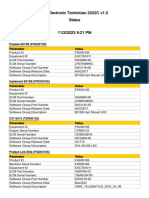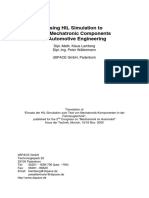0% found this document useful (0 votes)
118 views48 pagesSynchronization Tools
The document discusses synchronization tools for concurrent processes sharing resources. It describes the producer-consumer problem using a bounded buffer to prevent overflow or underflow. Atomic operations are needed to increment and decrement the buffer counter reliably. Race conditions can occur if processes modify shared data concurrently. Solutions presented ensure mutual exclusion, progress, and bounded waiting for critical sections through flags, turn-taking variables, and hardware synchronization instructions.
Uploaded by
upeshithaCopyright
© © All Rights Reserved
We take content rights seriously. If you suspect this is your content, claim it here.
Available Formats
Download as PDF, TXT or read online on Scribd
0% found this document useful (0 votes)
118 views48 pagesSynchronization Tools
The document discusses synchronization tools for concurrent processes sharing resources. It describes the producer-consumer problem using a bounded buffer to prevent overflow or underflow. Atomic operations are needed to increment and decrement the buffer counter reliably. Race conditions can occur if processes modify shared data concurrently. Solutions presented ensure mutual exclusion, progress, and bounded waiting for critical sections through flags, turn-taking variables, and hardware synchronization instructions.
Uploaded by
upeshithaCopyright
© © All Rights Reserved
We take content rights seriously. If you suspect this is your content, claim it here.
Available Formats
Download as PDF, TXT or read online on Scribd
/ 48
























































































